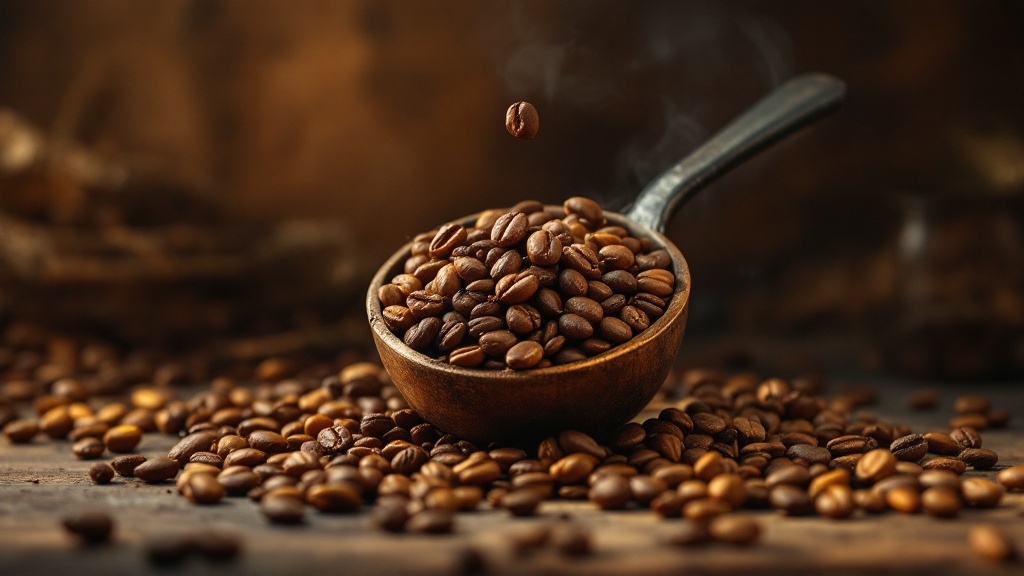Do you love the taste and ritual of coffee but find it interferes with your sleep? Decaf coffee might be the perfect solution. Offering the comforting warmth and familiar flavor of coffee without the caffeine jitters, decaf allows you to enjoy your favorite beverage any time of day, even right before bed. This guide explores the world of decaf, from its origins and production to its benefits for sleep and relaxation, empowering you to make informed choices about your evening beverage.
The History and Evolution of Decaf

The story of decaf coffee begins in the early 20th century with Ludwig Roselius, a German coffee merchant. In 1905, Roselius developed the first decaffeination process, albeit using benzene, a now-known carcinogen. Thankfully, decaffeination methods have evolved significantly. Today, several safe and effective methods exist, paving the way for healthier and tastier decaf options.
Modern decaffeination processes include the Swiss Water Process, CO2 extraction, and solvent-based methods using ethyl acetate or methylene chloride. The Swiss Water Process uses only water and osmosis, making it a popular choice for purity. CO2 extraction leverages pressurized carbon dioxide to selectively remove caffeine while preserving more of the coffee’s delicate flavor compounds. Solvent-based methods, while effective, raise concerns about chemical residues, although ethyl acetate is considered a natural solvent derived from sugarcane.
Supercritical CO2 Decaffeination
Supercritical fluid extraction (SFE) using carbon dioxide (CO2) represents a significant advancement in decaffeination technology. This method leverages the unique properties of CO2 above its critical point (approximately 31°C and 73 atm), where it exists as a supercritical fluid. In this state, CO2 possesses both gas-like diffusivity and liquid-like solvency, allowing it to penetrate the coffee bean matrix effectively and selectively extract caffeine. The process typically involves a pressurized vessel where green coffee beans are exposed to supercritical CO2. The precise pressure and temperature are carefully controlled to optimize caffeine extraction while minimizing the removal of desirable flavor compounds and aroma oils. The caffeine-rich CO2 is then separated from the beans, and the caffeine is subsequently recovered, often leaving behind a decaffeinated coffee bean with improved sensory attributes compared to older methods.
- Supercritical CO2 is a sustainable solvent, minimizing the use of harmful chemicals.
- The process preserves more of the coffee’s aroma and flavor compounds compared to traditional methods (e.g., chemical solvents).
- Caffeine recovery is efficient, enabling its reuse or repurposing in other industries.
- Precise control of pressure and temperature allows for customization of the decaffeination level.
- The resulting decaffeinated coffee often exhibits a richer, fuller flavor profile.
- Scalability makes supercritical CO2 decaffeination suitable for both small and large-scale production.
| Decaf Method | Process | Flavor Preservation | Sustainability |
|---|---|---|---|
| Swiss Water Process | Uses water and osmosis | High | Chemical-free |
| CO2 Extraction | Pressurized CO2 | Excellent | Sustainable |
| Solvent-Based | Ethyl acetate or methylene chloride | Moderate | Chemical residues |
Decaf and the Science of Sleep

Caffeine, a stimulant found in regular coffee, can interfere with sleep by blocking adenosine, a neurotransmitter that promotes drowsiness. It also increases adrenaline production, leading to alertness and potentially disrupting your sleep-wake cycle. Decaf coffee, on the other hand, contains significantly less caffeine – typically 2-5mg per 8-ounce cup compared to the 95mg found in a regular cup. This minimal caffeine content makes it a suitable evening beverage for those sensitive to caffeine’s effects.
According to the Sleep Foundation, establishing a consistent sleep schedule and avoiding caffeine before bed are crucial for healthy sleep hygiene. By opting for decaf in the evening, you can enjoy the comforting ritual of coffee without compromising your sleep quality. This can lead to improved sleep duration, reduced nighttime awakenings, and a more restful sleep experience.
Decaf Caffeine Content Analysis
The caffeine content in decaffeinated coffee is not uniformly zero; variations exist depending on the decaffeination method employed. While the commonly cited range of 2-5 mg per 8-ounce cup is a reasonable approximation for commercially available decaf coffee, this can fluctuate based on factors such as bean origin, roast level, and the specific decaffeination process used. Water-based decaffeination methods, for example, tend to leave slightly higher residual caffeine levels compared to supercritical CO2 extraction. Furthermore, the caffeine concentration may not be uniformly distributed within the coffee grounds; variations may exist depending on the bean’s structure and processing. Analytical techniques such as High-Performance Liquid Chromatography (HPLC) with UV detection are commonly used to accurately quantify caffeine levels in decaffeinated coffee samples. HPLC offers precise measurement down to microgram levels, enabling the identification of even minute discrepancies in caffeine content among different decaf coffee brands. These analytical results are crucial for individuals with heightened caffeine sensitivity, as even seemingly small amounts can affect sleep.
- Organic decaf coffee may contain slightly more caffeine due to less aggressive processing.
- The “decaffeination” process typically removes 97-99% of caffeine, leaving a small residual amount.
- Dark roasts of decaf coffee generally have lower caffeine content than light roasts.
- Individual bean variations contribute to inconsistencies in residual caffeine levels.
- Brewing method can slightly impact final caffeine concentration in the cup; stronger brews extract more.
Choosing the Right Decaf: Methods and Flavor

The decaffeination process significantly impacts the final flavor profile of decaf coffee. The Swiss Water Process, while known for its purity, can sometimes result in a slightly milder taste. CO2 extraction, on the other hand, is lauded for preserving more of the coffee’s original flavors and aromas, yielding a richer, more nuanced cup.
When selecting decaf coffee, look for transparency in labeling. Reputable brands often highlight the decaffeination method used, such as “Swiss Water Process” or “CO2 Decaf.” Certifications like USDA Organic and Fair Trade provide further assurances of quality and ethical sourcing. Experiment with different brands and methods to find the perfect decaf that suits your taste preferences.
Consider factors like roast level and origin as well. A darker roast decaf might offer a bolder, more robust flavor, while a lighter roast might be more delicate and nuanced. Explore different origins, such as Colombian, Ethiopian, or Sumatran, to discover unique flavor profiles.
CO2 Decaf: Supercritical Fluid Extraction
Supercritical fluid extraction (SFE) using carbon dioxide (CO2) is a prominent decaffeination method favored for its potential to preserve coffee bean aroma and flavor compounds. This process leverages the unique properties of CO2 above its critical point (approximately 31°C and 73 atm), transitioning into a supercritical fluid state. In this state, CO2 possesses both gas-like diffusivity and liquid-like density, allowing it to penetrate the coffee bean’s cellular structure effectively. The process begins by precisely controlling the temperature and pressure of the CO2 to optimize its solvent power for caffeine. The beans are then exposed to the supercritical CO2, which selectively dissolves and extracts the caffeine molecules.
- Caffeine is selectively extracted, leaving behind most desirable flavor compounds.
- The process is environmentally friendly as CO2 is a naturally occurring, non-toxic substance.
- Post-extraction, the CO2 is easily removed, leaving no residual solvent in the beans.
- Pressure and temperature are carefully monitored throughout the process for optimal extraction.
- Water is sometimes used in conjunction with CO2 to enhance caffeine removal efficiency.
- This method generally results in a higher-quality decaffeinated coffee compared to other methods.
Decaf: Beyond Sleep, Embracing Wellness
Decaf coffee isn’t just about better sleep; it also offers potential health benefits. Research suggests that decaf retains many of the antioxidants found in regular coffee, which are associated with various health benefits. The Harvard T.H. Chan School of Public Health highlights ongoing research on coffee and health, suggesting potential links to reduced risks of certain chronic diseases.
On top of that, the growing wellness trend has spurred innovation in the decaf market. Some brands are now incorporating adaptogens like ashwagandha or melatonin into their decaf blends to further enhance relaxation and sleep benefits. These functional decaf options cater to the growing consumer demand for products that support holistic well-being.
Decaf Processing Methods
The decaffeination process significantly impacts the final product’s chemical composition and, consequently, its potential health benefits. Several methods exist, each with its own advantages and disadvantages regarding residual caffeine content and the preservation of desirable compounds like chlorogenic acids, which contribute to the antioxidant properties of coffee. The Swiss Water Process (SWP), for example, utilizes water to extract caffeine, leaving behind a higher concentration of these beneficial compounds compared to solvent-based methods. This process relies on the principle of selective extraction, where caffeine is separated from other coffee components through a series of water washes and filtration using activated carbon. The absence of chemical solvents minimizes the risk of residual solvent contamination in the final product, making it a preferred method for many consumers seeking a clean decaffeination process.
- Solvent methods (e.g., methylene chloride, ethyl acetate) are faster and often cheaper than water processes but may leave trace solvent residues.
- The CO2 method uses supercritical carbon dioxide to extract caffeine, resulting in a relatively clean and effective decaffeination.
- Sugarcane ethanol is a natural solvent sometimes used, offering an alternative to chemical solvents but impacting flavor profiles differently.
- The choice of decaffeination method influences the coffee’s aroma and taste; some methods preserve flavor better than others.
- Certified organic decaf coffee ensures that both the coffee beans and the decaffeination process adhere to organic standards.
The Future of Decaf: Flavor, Functionality, and Sustainability

The decaf coffee market is experiencing significant growth, driven by increased health consciousness and a desire for sleep-friendly beverages. Millennials and Gen Z are increasingly embracing decaf as part of their evening routines, seeking ways to unwind and prioritize sleep without sacrificing the enjoyment of coffee.
Innovations in decaffeination technology continue to improve flavor retention, making decaf almost indistinguishable from regular coffee in taste. Sustainable decaffeination methods, such as the use of sugarcane-based ethyl acetate, are gaining traction, addressing environmental concerns and appealing to eco-conscious consumers. The future of decaf looks bright, with continued advancements in flavor, functionality, and sustainability.
Supercritical CO2 Decaffeination
Supercritical fluid extraction (SFE) using supercritical carbon dioxide (scCO2) represents a leading-edge decaffeination technology offering significant advantages over older methods like methylene chloride or ethyl acetate. The process leverages the unique properties of CO2 above its critical point (31.1 °C and 73.8 bar), where it exists as a supercritical fluid possessing both gas-like diffusivity and liquid-like density. This allows for efficient penetration into coffee beans, selectively extracting caffeine without significant removal of desirable aroma compounds or oils that contribute to flavor. The process typically involves several steps: initial bean preparation (cleaning, sizing, and moisture control), controlled pressurization and temperature regulation of the scCO2 within an extraction vessel containing the beans, careful separation of the caffeine-rich scCO2 from the decaffeinated beans, and finally, depressurization and recovery of the CO2 for reuse, minimizing waste. The specific parameters-pressure, temperature, and flow rates-are carefully optimized for each coffee variety and desired level of decaffeination, usually expressed as a percentage of caffeine removal.
- Caffeine removal efficiency typically reaches 97-99.9%, depending on process parameters.
- Compared to solvent-based methods, scCO2 decaffeination is considered environmentally friendlier due to the use of a recyclable, non-toxic solvent.
- The process preserves more aroma compounds and oils, resulting in a superior flavor profile compared to older methods.
- Pressure and temperature are precisely controlled to achieve the desired level of decaffeination, tailoring the process for specific coffee bean types.
- Post-extraction, the supercritical CO2 is recycled, minimizing waste and reducing operational costs.
- The decaffeination process can be integrated into existing coffee processing facilities with relatively minor modifications.
Conclusion: Embrace the Decaf Ritual

Decaf coffee offers a delicious and versatile way to enjoy the comforts of coffee without compromising sleep or overall well-being. From its rich history and evolving production methods to its growing role in sleep hygiene and wellness, decaf provides a compelling alternative for coffee lovers seeking a balanced lifestyle. Whether you’re winding down after a long day or simply seeking a comforting warm beverage, explore the world of decaf and discover the perfect cup to enhance your relaxation and sleep experience.
Decaf Processing Methods
The caffeine removal process significantly impacts the final cup’s flavor profile and chemical composition. Several methods exist, each with distinct advantages and disadvantages. The Swiss Water Process (SWP), for example, utilizes water to extract caffeine, leaving behind a cleaner, more nuanced flavor profile compared to methods employing solvents. This process involves repeated washing of green coffee beans with purified water, which selectively removes caffeine molecules without relying on chemical solvents. The effectiveness of SWP hinges on the careful control of water temperature, pressure, and contact time during the extraction phases. Improper control can lead to the extraction of desirable flavor compounds alongside caffeine, resulting in a less flavorful final product. Variations in bean type and origin also impact the efficacy of SWP, requiring adjustments to optimize caffeine removal while preserving desirable flavor attributes. Monitoring the caffeine levels throughout the process, often utilizing HPLC (High-Performance Liquid Chromatography) analysis, is crucial for ensuring consistent quality and regulatory compliance.
- Solvent-based methods, like methylene chloride or ethyl acetate, are faster and often cheaper than water processes but can leave behind trace solvent residues, a concern for some consumers.
- The Swiss Water Process (SWP) is considered a “natural” decaffeination method due to its avoidance of chemical solvents, appealing to consumers seeking clean-label products.
- Carbon dioxide decaffeination uses supercritical CO2 to extract caffeine; this method is also considered a “natural” process and generally results in high-quality decaf coffee.
- The choice of decaffeination method significantly impacts the cost of production, influencing the final price of decaffeinated coffee.
- Properly decaffeinated coffee should retain approximately 97% of its original flavor compounds, though this varies depending on the bean and the process used.
| Decaf Method | Flavor Impact | Process Type | Cost Impact |
|---|---|---|---|
| Swiss Water Process | Cleaner, nuanced flavor | Natural (no solvents) | Higher production cost |
| Solvent-based Methods | Potential solvent residues | Chemical solvents used | Cheaper, faster |
| CO2 Decaffeination | High-quality flavor | Natural (supercritical CO2) | Moderate cost |

